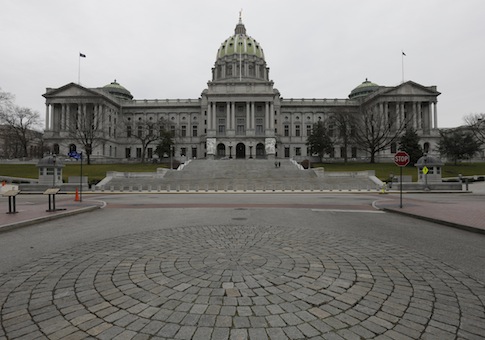Six GOP lawmakers on Tuesday introduced a proposal to make Pennsylvania, the "Keystone State," the nation’s 25th right-to-work state.
The legislation, which would end the longstanding practice of forcing employees to join unions as a condition of work, has stalled several times over the past decade. The bill’s sponsors say new laws in Michigan and Indiana forced the state’s hand.
"The needs of our economy dictate that it must be adopted at some point in time," said state Rep. Daryl Metcalfe. "The victory of right-to-work in Michigan and Indiana certainly thrust the spotlight on it and made the General Assembly look it more seriously than the past."
Pennsylvania is one of the most heavily unionized states in the country with more than 700,000 workers belonging to organized labor groups. That is nearly 100,000 more union members than in Michigan.
The advent of right-to-work in the traditionally labor-friendly Midwest and Rust Belt has left policymakers scrambling to catch up, said Nate Benefield, director of policy analysis at the free-market Commonwealth Foundation.
"Indiana and Michigan are states that we directly compete with," he said. "We’re going to have to evolve to remain competitive and it’s also a great opportunity for us to outcompete the northeast."
If Pennsylvania passes right-to-work, it will be the first state to do so in the northeast. That could give it an economic advantage over neighboring New York and New Jersey, which lead the nation in union membership as a percentage of the workforce, advocates of right to work legislation said.
"We’re playing catch-up to Indiana and Michigan, but our immediate neighbors, New York, New Jersey, and Maryland are even less competitive than Pennsylvania is," Benefield said. "I think right-to-work is a big part to improving our business climate."
Restricting the use of compulsory union dues also could deal a blow to union influence.
Indiana experienced a dramatic decline in union membership after passing right-to-work in February. Nine percent of state workers belonged to union in 2012, down from 11.3 percent in 2011, according to the Bureau of Labor Statistics.
Supporters of the legislation point out that Pennsylvania also saw union membership drop and blamed this in part to a declining private sector economy.
"We are sitting on all of these resources—natural gas, shale, connection to the great lakes—but history has shown that we’re not creating enough jobs to keep our young people here; they’re going to right-to-work states to find jobs," Metcalfe said. "The union status quo attitude has hampered our ability to create jobs."
Pennsylvania lost more than 300,000 net residents between 1990 and 2008. That is one of the worst rates in the country, according to the state’s Commonwealth Foundation. Benefield said improving the overall economy could reinvigorate Pennsylvania’s unions.
"When you have right-to-work, you expect members to leave the union, but when you bleed jobs because of a struggling economy, you bleed union jobs, too," Benefield said. "Right-to-work states have faster economic growth, higher GDP, and higher job growth—those are good for all workers in the long-term."
The GOP will have one obstacle in getting right-to-work through, however. Republican Gov. Tom Corbett said in December that he would not pursue such legislation in 2013, adding that the state "lacked the political will." Michigan Gov. Rick Snyder made similar statements earlier in his term before reversing himself during the lame duck session.
Metcalfe said he believes that Corbett will sign the legislation if it reaches his desk.
"Over the last two years he’s invested himself in very little. He signed good legislation, but only because we’ve had good leadership in the legislature," Metcalfe said. "He hasn’t used the bully pulpit in too many issues, so he’s leaving this to us as he does with most issues."
